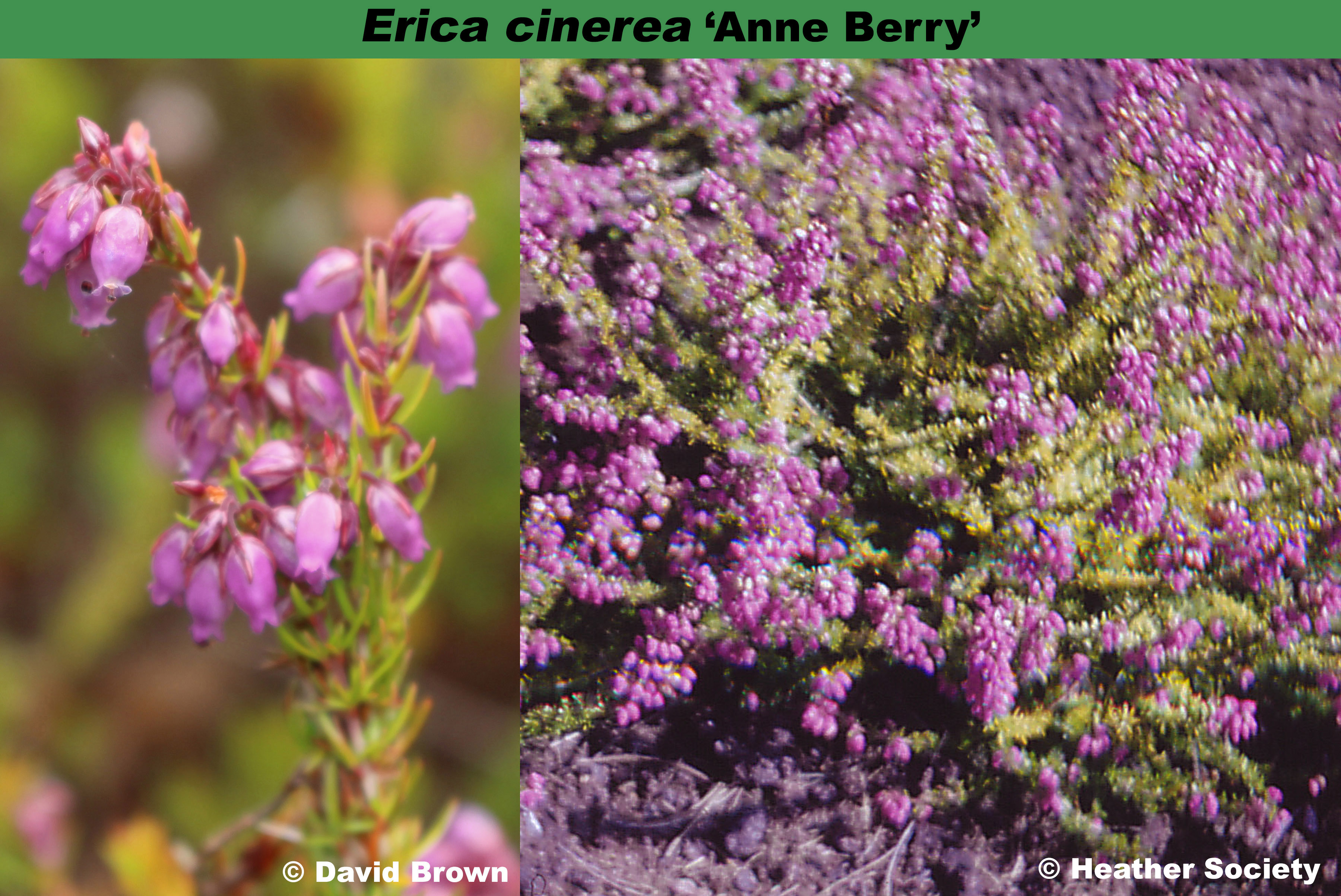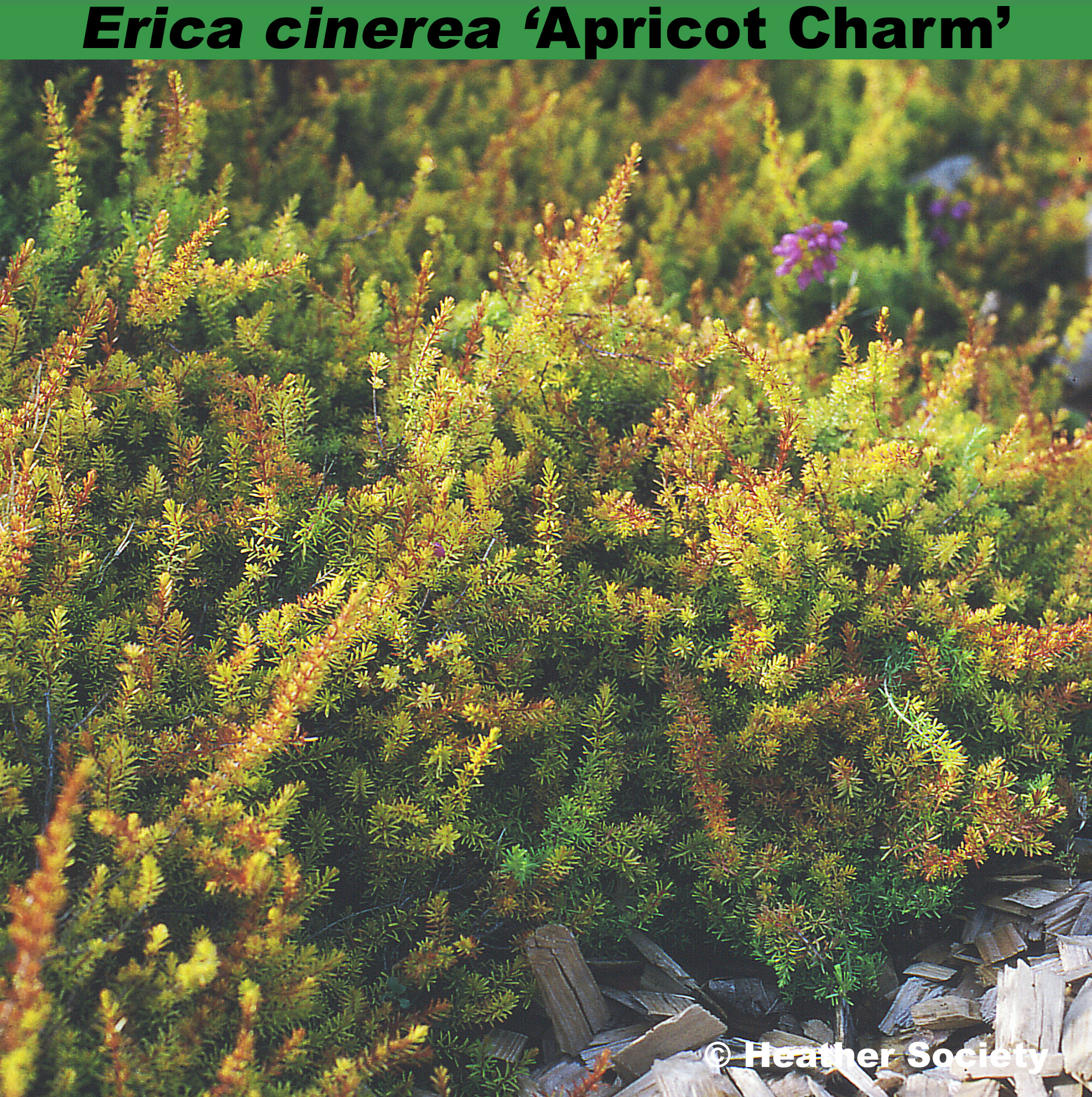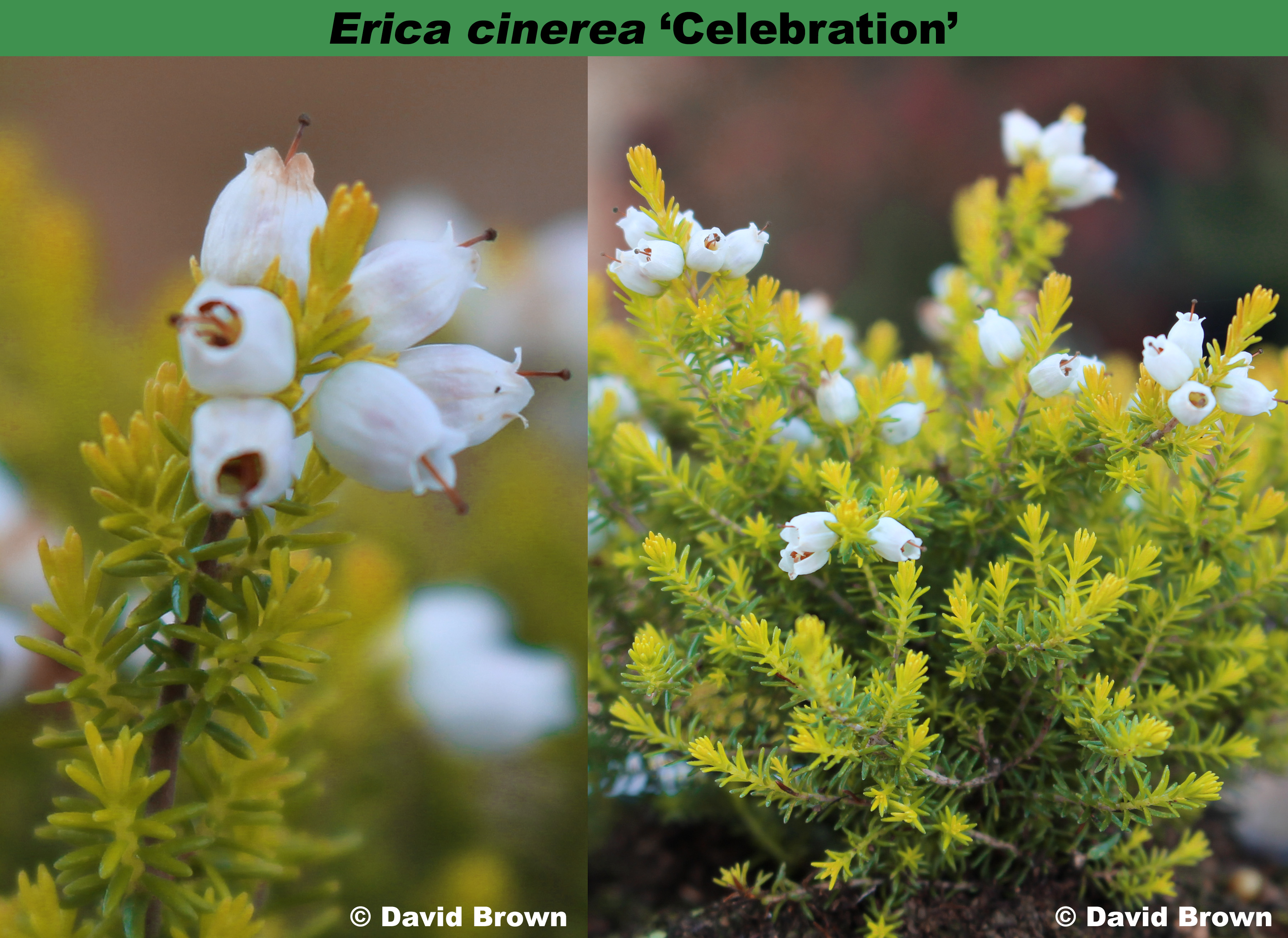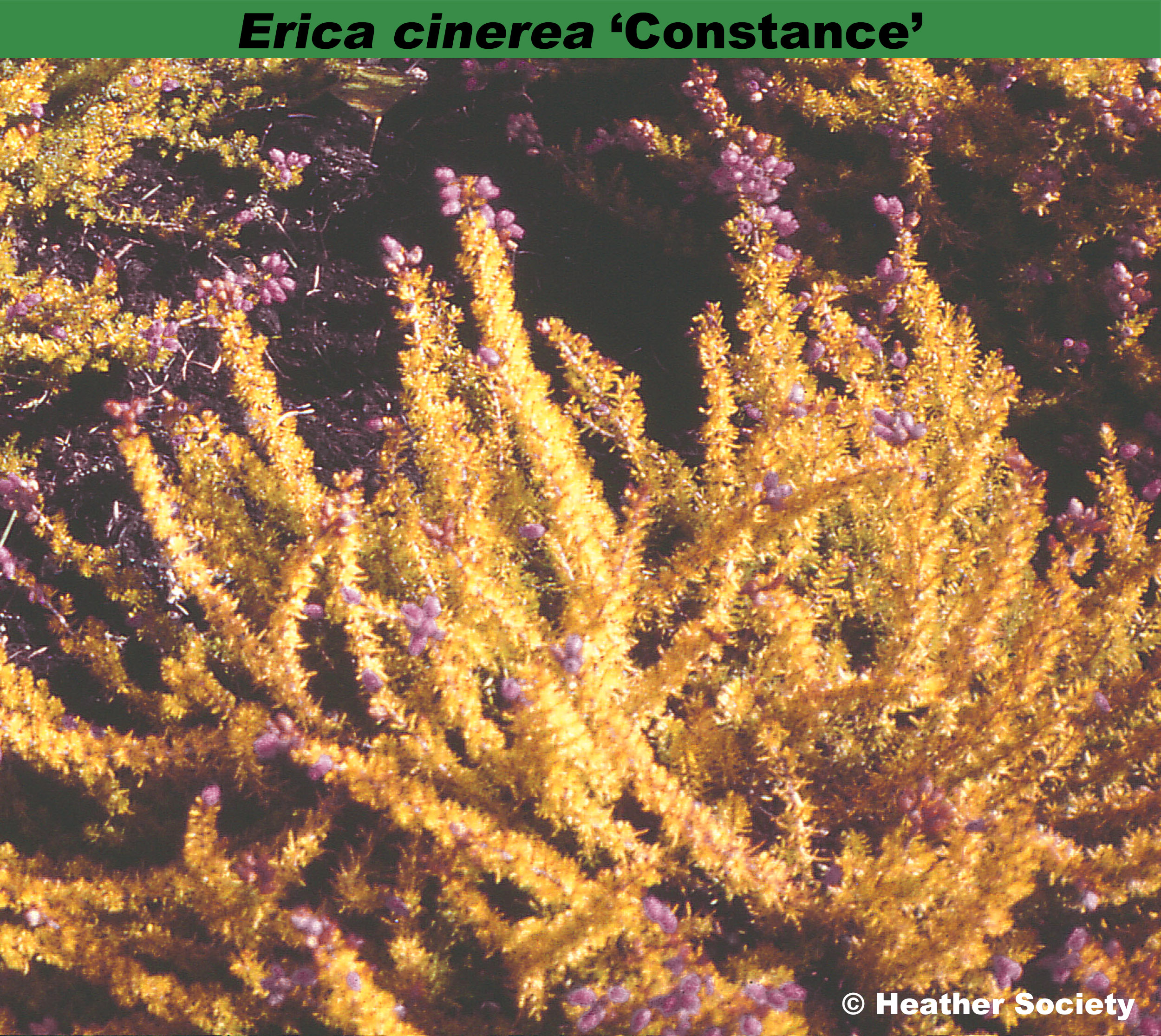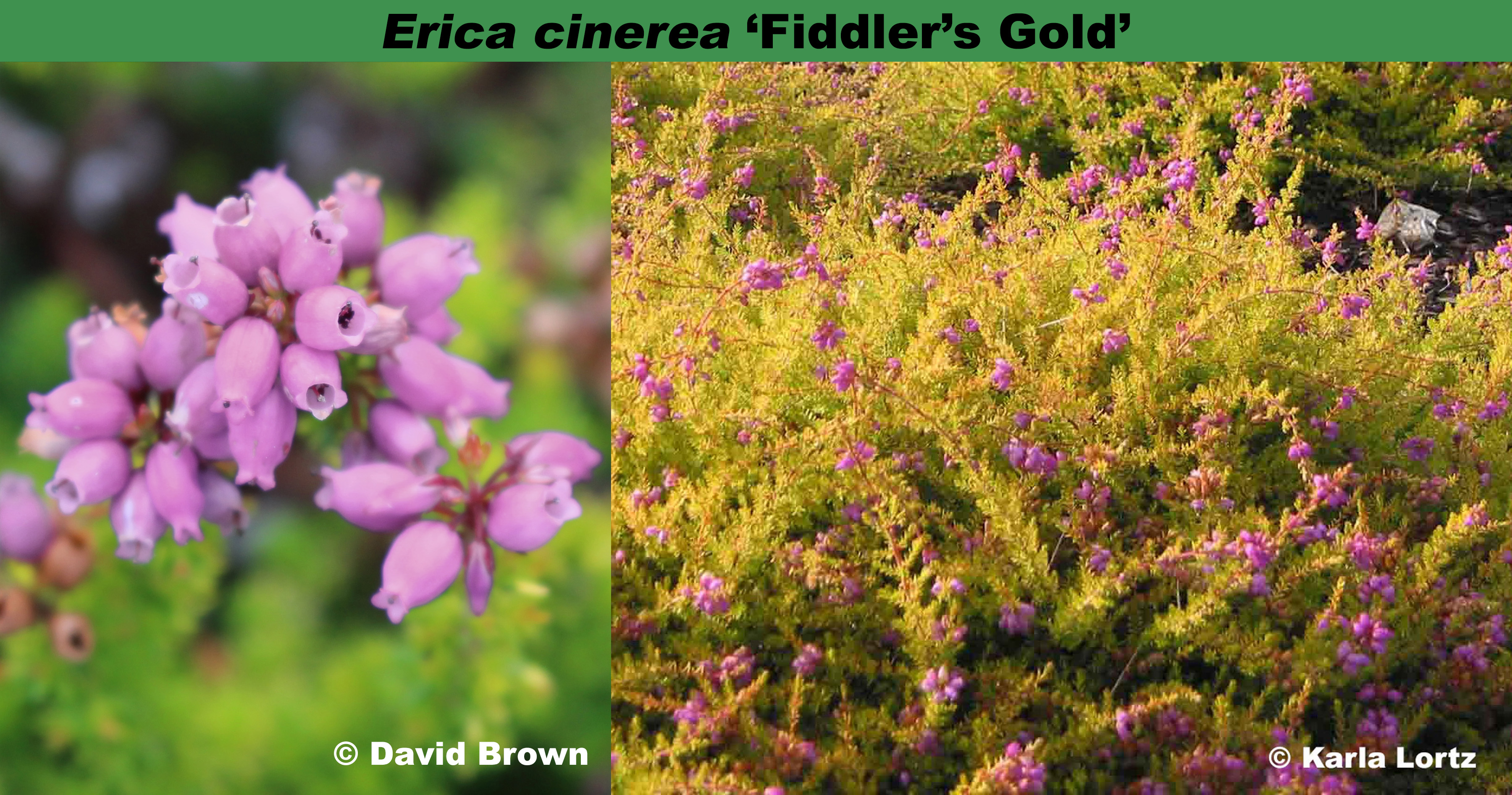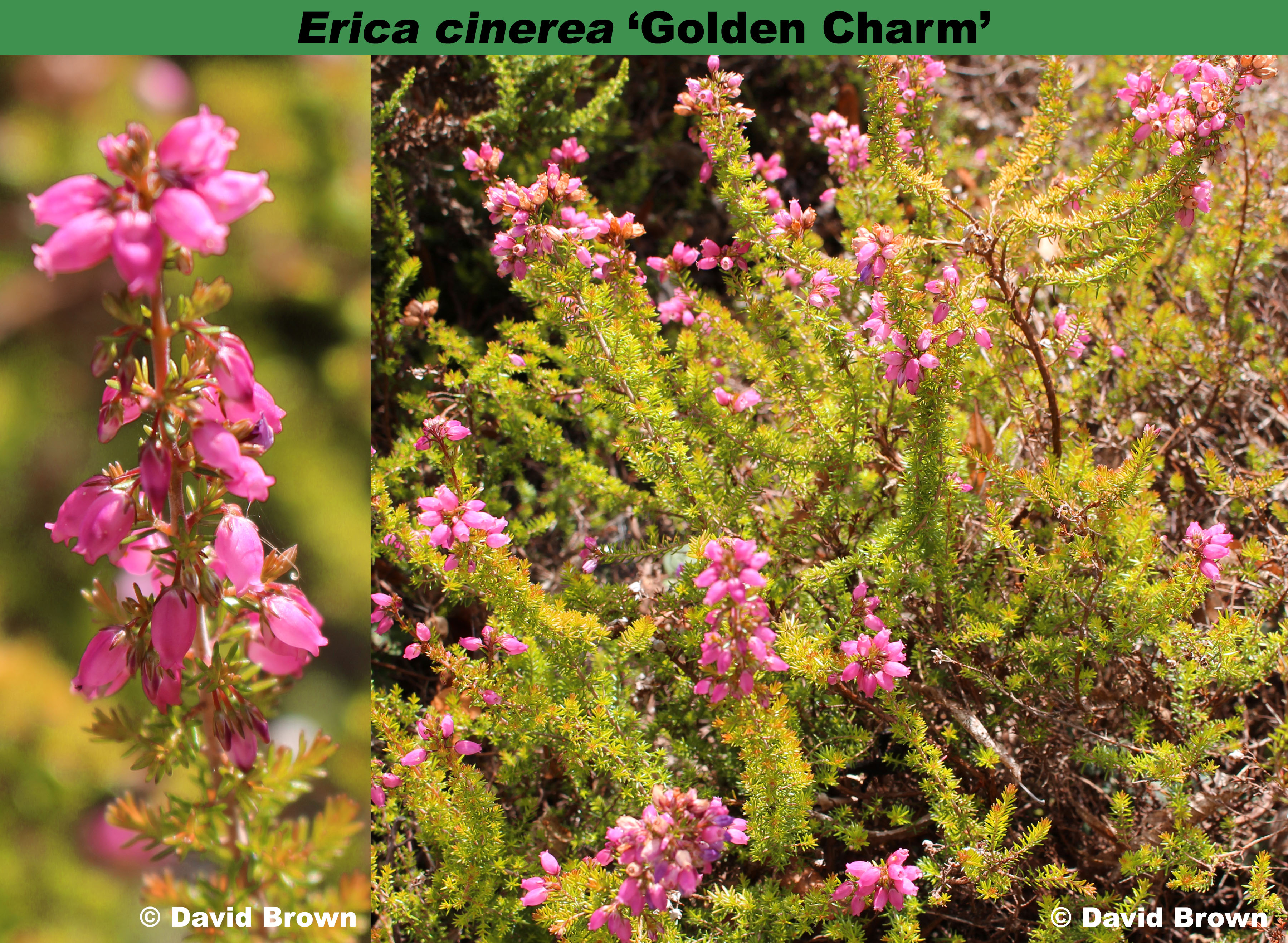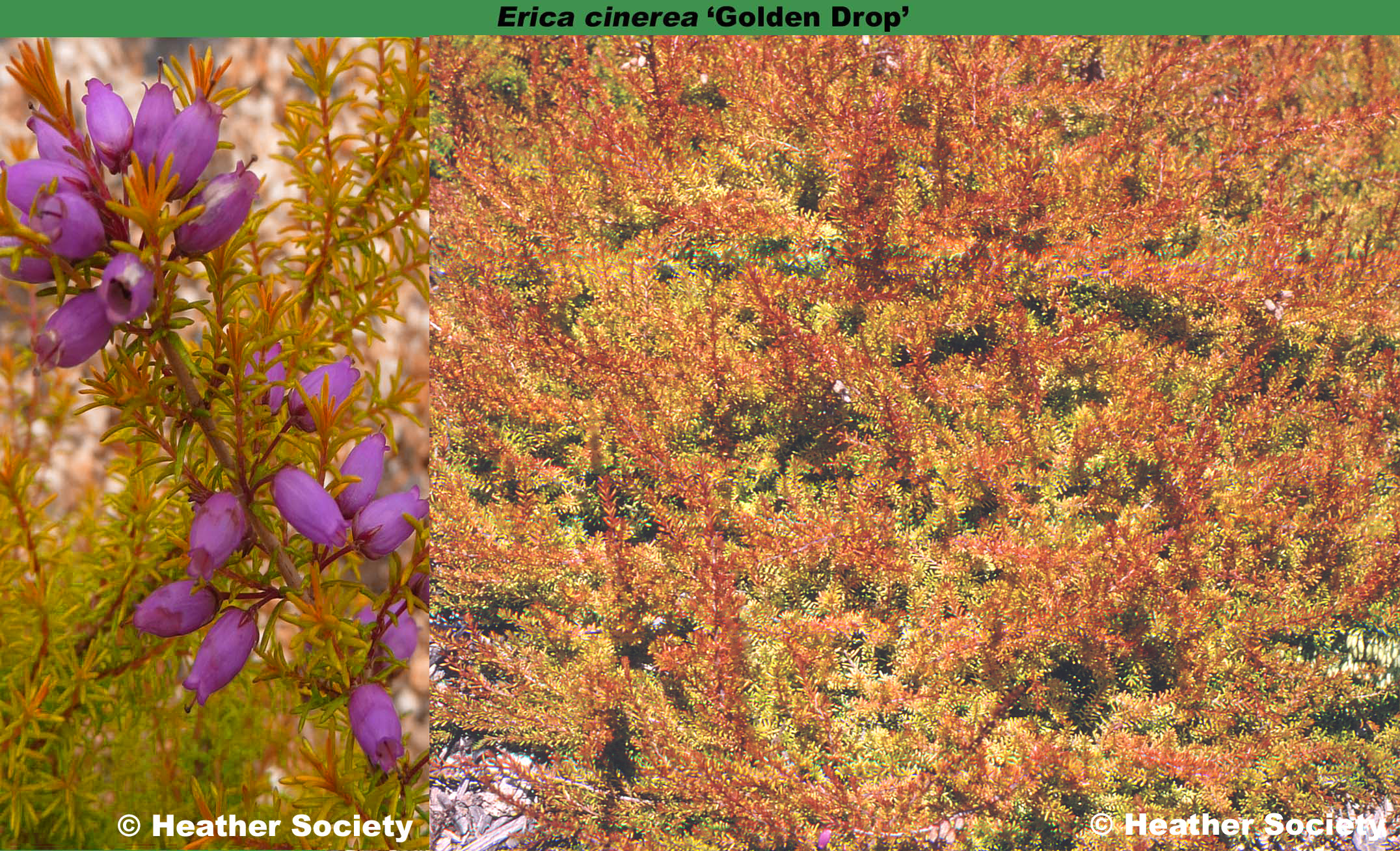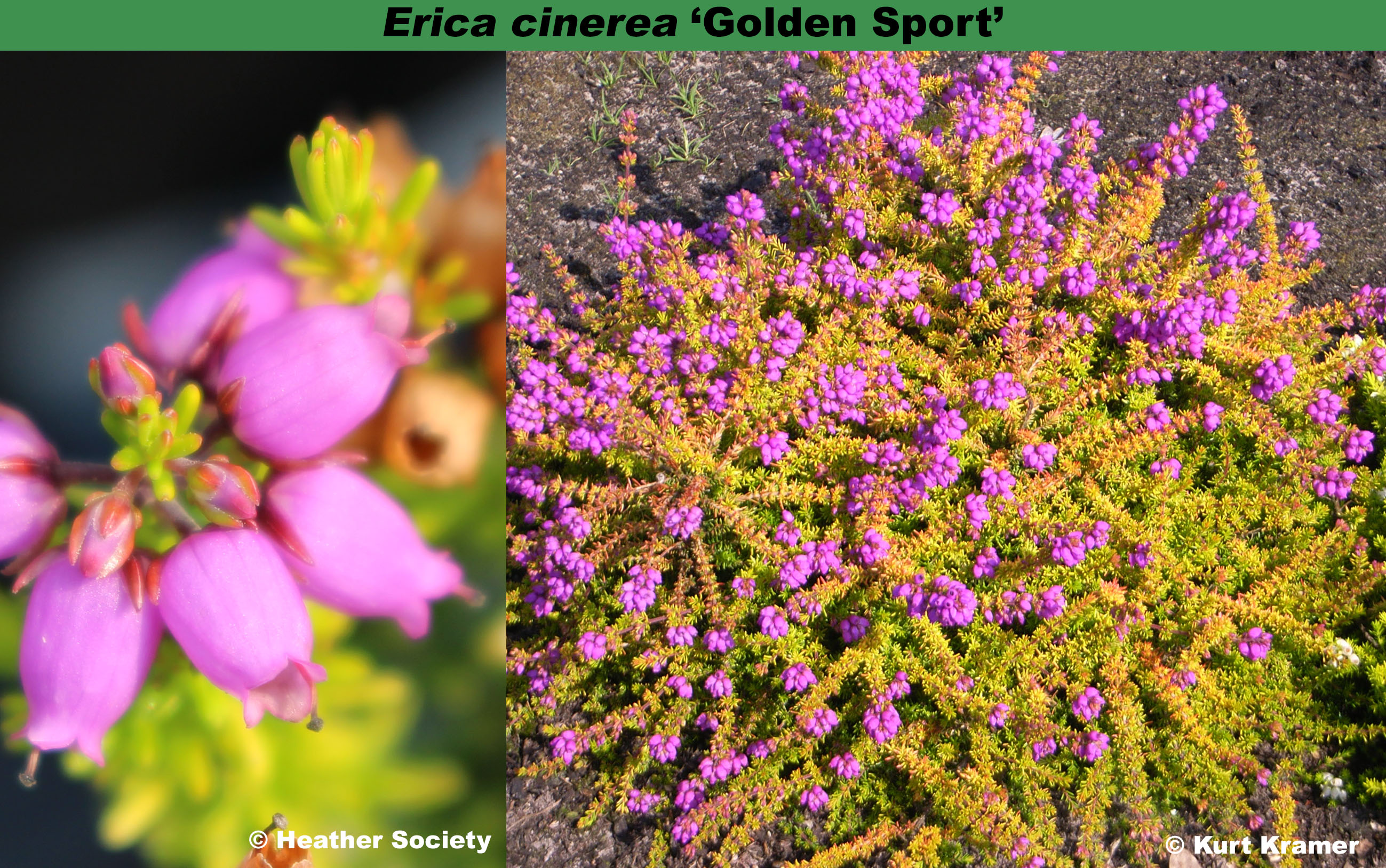Bright magenta (H14) flowers, VI–IX; gold foliage which reddens in winter; compact spreading habit; height 10–15cm; spread 31–45cm.
Heathers
‘Anne Berry’
Amethyst (H1) flowers, VII–X; yellow-green foliage throughout the year, young shoots with bronze tips in spring; height 10–15cm; spread 46–60cm.
Wild-collected; found on Chobham Common, Surrey, England, about 1960 by Anne Berry; introduced by G. Underwood & Son (Hookstone Green Nursery, West End, Woking, Surrey) by 1963.
Named after Anne Berry who was an employee of G. Underwood & Sons (Chobham, Surrey).
The spelling of the cultivar name is here corrected, as permitted under the International Code of Nomenclature for Cultivated Plants (8th edition, 2009), Article 35.3, to correct the unintentional mistake (“Ann Berry”) in the original spelling.
‘Apricot Charm’
Very sparse mauve (H2) flowers, VII–VIII; light yellow foliage in summer, turning to apricot-orange in winter; neat and compact; height 10–15cm; spread 16–20cm.
Found as a sport collected on Sunningdale Golf Course, Surrey, England, by J. F. Letts; introduced by J. F. Letts in 1970.
Name is a reference to the coloured foliage.
‘Celebration’
White flowers, VII–IX; intense gold foliage in summer and autumn, turning lime-green in winter; prostrate; height 16–20cm; spread 31–45cm. An interesting plant owing to the rare combination of white flowers and golden foliage in Erica cinerea.
A seedling found in his nursery by John L. Jones, Glynwern Nursery, Cilcennin, Lampeter, Dyfed, Wales; to be available in small numbers during 1995.
‘Constance’
Beetroot (H9) flowers, VII–XI; gold foliage flecked with red and yellow; height 10–15cm; spread 21–25cm.
Sport on ‘P. S. Patrick‘; found by B. & V. Proudley (The Nutshell, St Briavels, Gloucestershire, England); introduced by B. & V. Proudley in 1971.
Named in honour of Mrs Constance I. MacLeod, first Secretary of The Heather Society from1963 to 1977.
‘Fiddler’s Gold’
Lilac-pink (H11) flowers, VII–VIII; yellow-gold foliage with red tints, brightest in spring; height 21–25cm; spread 31–45cm.
Seedling growing near ‘Golden Hue‘ and ‘Golden Drop‘; found in J. E. B. (Edward) Plummer’s garden at Fiddlestone Lodge, Burton in the Wirral, Cheshire, England; propagated at Liverpool University Botanic Gardens, Ness, Cheshire, before 1959.
Name derived from the garden, Fiddlestone.
‘Golden Charm’
Magenta flowers, VII–IX; gold foliage in summer tinged bronze in autumn; compact; height 21–25cm; spread 31–45cm.
Seedling; found by Clive Benson in his garden, Farington, Preston, Lancashire, England; introduced by C. Benson by 1983.
Name alludes to the foliage colour.
‘Golden Drop’
Mauve (H2) flowers, VI–VIII, sparse; young foliage orange, maturing to gold in summer before turning bright orange and then deep red in winter; height 16–20cm; spread 31–45cm.
Wild-collected; found in Dorset, England, by Charles D. Eason of Maxwell & Beale (Broadstone, Dorset), and introduced by Maxwell & Beale in 1933.
Named after his favourite plum jam which is made from the Australian plum of the same name. The name is composed of two words, not one.
‘Golden Hue’
Amethyst (H1) flowers, VII–X; pale yellow foliage, the shoots tipped orange in winter; strong upright habit; height 31–45cm; spread 61–75cm.
Wild-collected sport; on a plant growing on a railway bank near Broadstone, Dorset, England, found by D. F. Maxwell, and introduced by Maxwell & Beale (Broadstone, Dorset, England) in 1925. The holotype of Erica cinerea f. aureifolia came from this clone.
Name is a reference to the yellow foliage. The name is composed of two words, not one.
‘Golden Sport’
Amethyst (H1) flowers, VI–XI; yellow foliage turning gold and red in winter; height 10–15cm; spread 26–30cm. Pruning improves the foliage colour.

